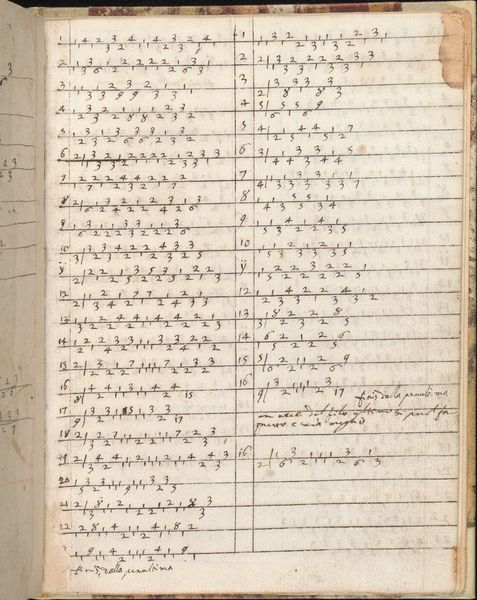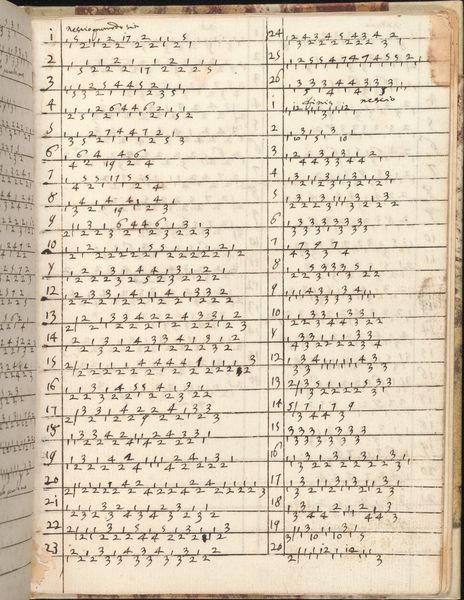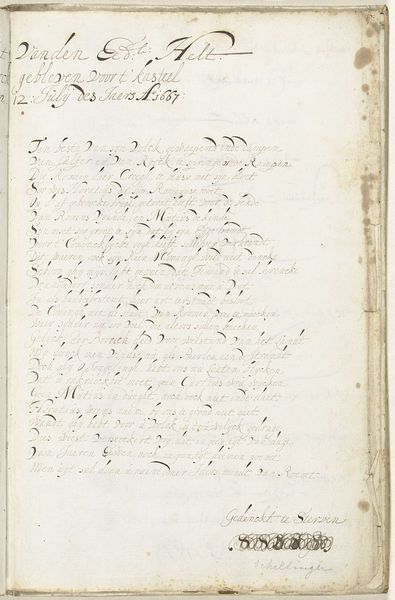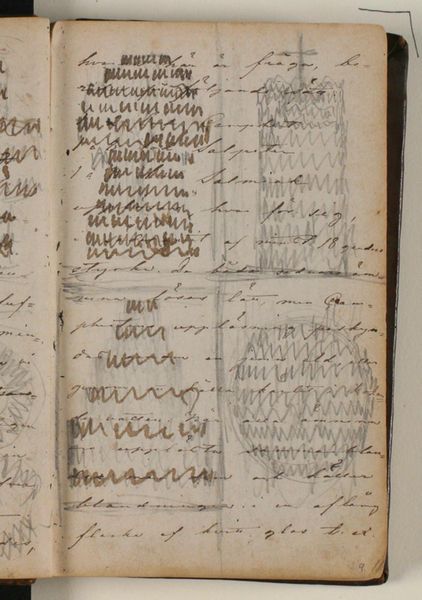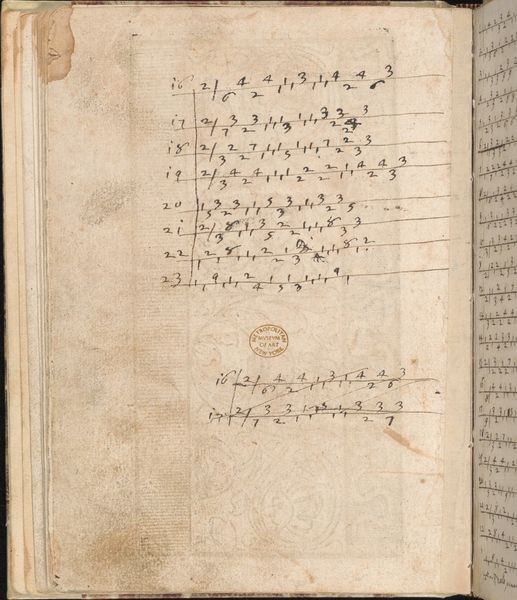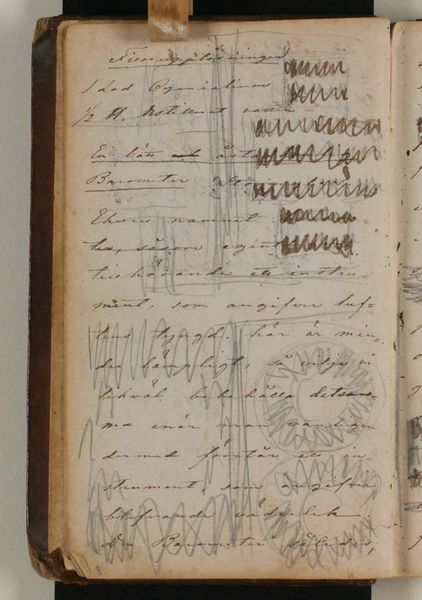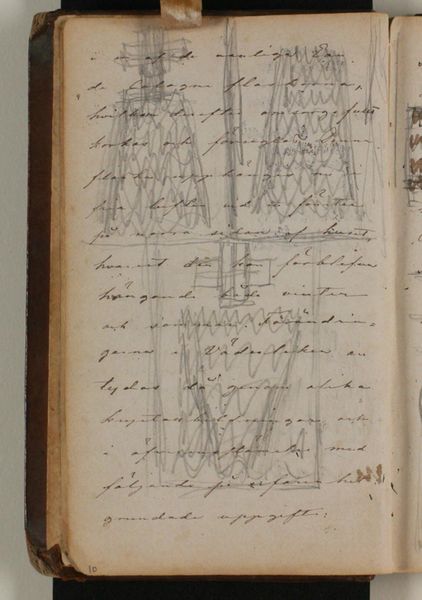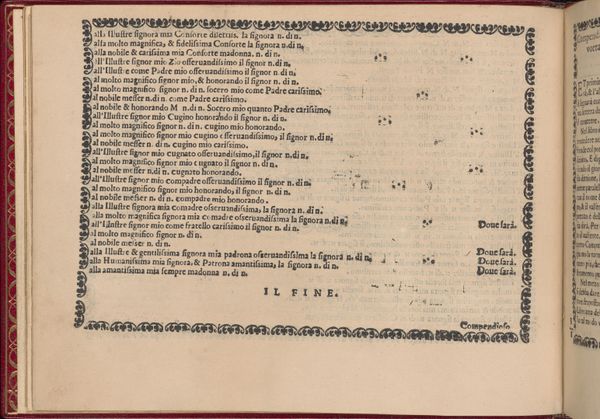
Ein new getruckt model Büchli...Page 26, recto 1529
0:00
0:00
drawing, print, paper, ink
#
drawing
#
hand written
#
medieval
#
hand-lettering
#
ink paper printed
# print
#
book
#
paper
#
ink
#
hand-written
#
history-painting
Dimensions: Overall: 7 7/8 x 6 1/8 in. (20 x 15.5 cm)
Copyright: Public Domain
Curator: Let's take a look at this intriguing page from "Ein new getruckt model Büchli...Page 26, recto," crafted in 1529 by Johann Schönsperger the Younger. It resides here at the Metropolitan Museum of Art. It’s primarily executed in ink on paper, categorized as both a drawing and a print. Editor: My first thought? It looks like some kind of coded message, or maybe musical notation? The repetition of numbers is striking. The hand-lettering makes me wonder about literacy and access to information in the 16th century. Curator: Indeed. Model books such as this were pattern books for artisans—particularly those involved in fields like embroidery and lacemaking. The patterns are meticulously rendered, serving as guides for the creation of intricate designs. This example gives insight into how design knowledge was disseminated and used during the medieval and early Renaissance period. The "history-painting" tag we sometimes see with these books relates to the historical context they offer us, rather than depictions of specific events. Editor: That's interesting. So, these numbers aren't just decoration; they are instructions. Considering its functionality, who had access to the book matters. Was this pattern book available only to wealthy women, or could the merchant class purchase and utilize it too? Was there perhaps a class divide? I wonder if this reflects and reinforces existing gendered divisions of labor. Curator: Those are critical points. Model books became more widely available with the rise of printmaking, broadening their audience beyond elite circles, although cost remained a barrier for many. Editor: And beyond gender and class, I’m drawn to the physical texture implied in this printed drawing—you can imagine the needle moving, creating these geometric designs with the numbered sequences offering guidance. Curator: Absolutely, these "Büchli" served as vital tools. In many ways, they exemplify how art and craft were deeply intertwined in earlier eras. This specific example offers an insight into that relationship. Editor: Looking at this page, I appreciate how art is not separate from life but informs it, literally shaping textiles, objects, and ultimately, the cultural landscape. I find these unassuming objects speak volumes. Curator: And to appreciate it fully is to comprehend not only the image itself but also its position in a complex socio-economic setting, highlighting how it impacted people and society at large.
Comments
No comments
Be the first to comment and join the conversation on the ultimate creative platform.

